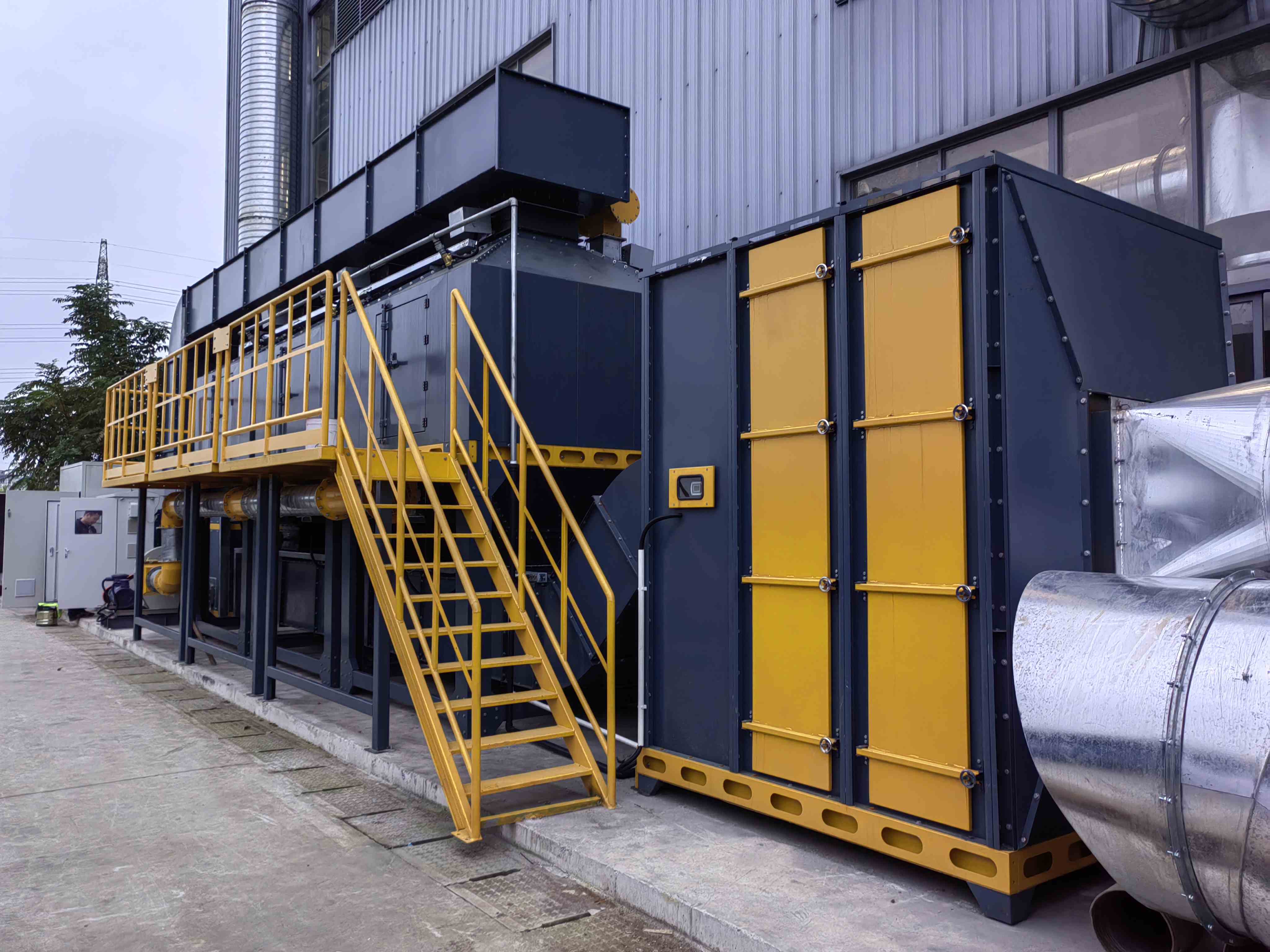RCO catalytic combustion equipment
Working principle of RCO catalytic combustion
The activated carbon adsorption catalytic combustion treatment process uses a new type of honeycomb activated carbon as the adsorbent material, utilizing its large specific surface area and high adsorption performance. After adsorption approaches saturation, hot air is introduced for desorption regeneration. After desorption, the exhaust gas is introduced into the catalytic combustion bed for flameless combustion, thoroughly decomposed and purified. The hot desorption gas is recycled in the system, greatly reducing operating energy consumption. This method has the advantages of stable and reliable operation, low operating costs, and easy maintenance, and is suitable for the treatment of high air volume and low to medium concentration exhaust gases.
The working process of catalytic combustion device is divided into three stages: preheating, desorption, and cooling,
Explain in conjunction with the following process flowchart:

Preheating: The upper and lower adsorption valves and desorption valves of the adsorption device are closed, the preheating valve is opened, the desorption fan M is started, the heating zone heaters CO1, CO2, and C03 are started, and the catalytic combustion device performs internal circulation preheating. When the temperature reaches the preheating temperature, it enters the next stage - desorption
Desorption: When the temperature reaches the preheating temperature, the preheating valve is closed and the upper and lower desorption valves of the adsorption device are opened. The concentrated organic gas first passes through the heat exchanger in the catalytic combustion device, absorbs a part of the heat energy from the heat exchanger plate, and reaches the heating zone of the catalytic reaction chamber. After heating in the heating zone, the exhaust gas temperature is further increased to reach the catalyst ignition temperature. After passing through the catalyst in the catalytic chamber, the higher concentration organic gas undergoes catalytic combustion (flameless combustion) under the action of the catalyst as an intermediate. The organic gas is decomposed into CO2 and H2O, and the high-temperature gas produced by combustion passes through the heat exchanger again. The heat exchanger absorbs heat and stores a part of the heat energy to provide partial energy for the next organic waste gas to enter preheating. After cooling, the purified gas is divided into two parts. One part is used as thermal desorption gas and enters the adsorption device through a flame arrester for further desorption. The other part of the excess purified gas is discharged through the exhaust pipe. This alternating cycle of work completes the catalytic combustion process. When the desorption temperature is too high, measures such as grouping to turn off the heater and starting the supplementary air fan (supplementary air valve) are taken to cool down the supplementary air and maintain the desorption gas temperature within an appropriate range. When the detachment time is over, enter the next stage - cooling
Cooling: When the desorption time is over, the desorption fan M runs at full frequency, the upper and lower desorption valves of the adsorption device remain open, all heating zone heaters are closed, and the supplementary cold air valve and exhaust air valve are opened; When the temperature of the adsorption device drops to its unloading temperature, the upper and lower desorption valves of the adsorption device close, and the remaining valves remain open. When the temperature of the catalytic combustion device drops to its unloading temperature, the desorption fan M, the supplementary cold air valve, and the exhaust air valve close, and the cooling stage ends. The desorption process is completed, and the next desorption process is awaited.



 Address: No. 260, Building 6, Fuling Road, Shuangliu Park, Jiaolong Industrial Port, Chengdu
Address: No. 260, Building 6, Fuling Road, Shuangliu Park, Jiaolong Industrial Port, Chengdu Phone: 028-85880837
Phone: 028-85880837 Email: ts.2017@sctshb.com
Email: ts.2017@sctshb.com